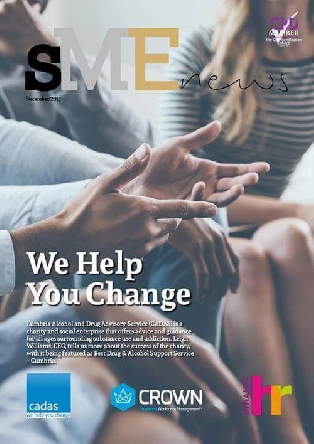Careers in fashion have become more and more mainstream in recent years, as the industry evolves and grows. There are a wide range of options available aside from the ones you may expect, such as designers and models. From a career in fashion-related finance, to discovering a role in communications, the opportunities are varied. Take a look at what’s out there, and explore some careers that you might not have thought of:
Garment technologist
For textile students with a keen interest in fashion, a career as a garment technologist could tick all of the boxes. This role is largely about quality control and investigative work with regards to the materials that are used to create fashion pieces.
A garment technologist develops and refines materials, ensuring that they are of high quality and fit for purpose. Through testing new combinations of materials and fibres, people in this role look to find the best type of fabric for what’s to be made. These people work closely with designers, pattern graders and buying teams to find the right type of fabric for what’s to be made.
As a garment technologist, you’ll also be heavily involved with devising a way to make the manufacturing process more efficient. This might be to do with negotiating new practices and pricing systems, and would involve liaising with buyers and suppliers to negotiate a cost that’s within the budget of the project. Or, they might be looking to make the company more sustainable, and therefore the technologist would investigate the production of the fabrics.
Having a keen interest in textiles and fashion will boost your employability and showing that you are keen to bring creativity to the manufacturing process will also make you a favourable candidate. Employers may also expect you to have a degree in a related topic, such as garment technology and production, or you may complete a module around this as part of a wider subject. Or, look out for apprenticeship schemes and junior roles, where you can work your way up to this role.
Pattern graders
Pattern grading is a key element in the fashion manufacturing sector. The role is focused on producing scaled-up and scaled-down versions of design patterns, which enables the manufacturers to produce the same patterned piece of clothing in different sizes. From a slim fit shirt to suit trousers along with a whole host of other garments, as a pattern grader you will be involved in everything from the development processes down to the smallest of details.
A few of the typical duties of a pattern grader include; tracing the outline of a pattern with scanning equipment, quality checking to ensure that the final pattern is in-line with the original design and creating sample garments from the pattern to send to prospective buyers.
Although an interest in textiles and fashion seems like the obvious criteria, a successful candidate for the role will also need some practiced mathematical skills. You must be able to take accurate measurements and make calculations in order to scale the patterns correctly. It’s also important that you enjoy being part of a team, so to cooperate with others in the design process, and be able to confidently use IT to work with a digitising table.
A degree isn’t necessary if you want to become a pattern grader. Instead, you could take the apprenticeship route through college by studying subjects such as fashion or textiles. Or, work your way up from an assistant or pattern cutter to become a grader in a fashion company.
Fashion illustrators
A fashion illustrator is responsible for creating eye-catching fashion drawings and diagrams that represent the garment to others. They work closely with designers to create conceptual sketches and illustrations of fashion products. In addition to this, they may produce advertising copy and images for promotional material for print and online coverage. To succeed in this role, you need to be able to use computer design, as well as drawing by hand and have an eye for fashion.
Many professional fashion illustrators have a degree in graphic design or a related subject, as being able to show a portfolio of work can be extremely advantageous for recruitment. To get accepted onto a degree of this kind, you will need GCSEs and potentially A levels, or entry based on passing a foundation course. Alternatively, you can build up a strong portfolio and gain experience in relevant positions to impress prospective employees.
Fashion journalist
A fashion reporter or journalist creates editorial material and written articles for publications, covering topics such as the latest in clothing, trends and accessories for a range of publications.
In line with the ever-evolving digital age, fashion journalists are no longer limited to print publications when it comes to getting their work published — there’s a plethora of online magazines and platforms for generating and sharing content, and there are more opportunities available as a result. You could also go freelance, but work isn’t guaranteed here. As part of the job, you’ll likely be required to travel and meet new people to conduct interviews and get the latest on fashion stories.
Budding writers with an interest in fashion are the ideal candidates for a role as a fashion journalist, but there are some educational choices that you can make to better your chances of getting a career in this field. Choosing A-levels such as English Language will further your creative writing skills, for example. There are specialty degrees out there too, such as the Fashion Communications course which will teach you more about the sector and increase your employability.
Another good step that you could take is to gather a collection of your existing written pieces, so you can show employers exactly what your strengths are. Start your own fashion blog to write about the latest news in the sector and approach editors for freelance opportunities. Networking is also a great way to get to know about future vacancies. Try to secure unpaid work in relevant positions to build your experience too.
Fashion accountant
Although it sounds surprising, fashion and finance can be combined on a career path.
Finance roles in the fashion sector are far from limited — from retail accountants to accountants in textiles who ensure that a budget is adhered to when buying materials. Roles like this allow you to be involved with designers and the garment-making process, whilst keeping finances under control.
Inevitably, a mathematical background is essential for this role. Start by taking Maths at A-level and progress to studying a financial role at university. This might be Economics, Accounting or another form of Financial Studies. As part of your degree, take up the opportunity to undergo a year in industry — this can give you an insight into the field that you’re going into and give you some invaluable experience to put on your CV.
The fashion sector is full of hidden career gems, so you are set to find the perfect option to you’re your exact needs. It’s all about being proactive and showing potential employers what you’re capable of. Good luck!







